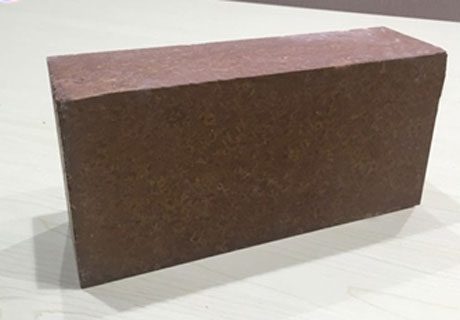Description
Basic Magnesite Bricks: The Unsung Heroes of High-Temperature Industries
In the demanding world of high-temperature industrial processes, the humble magnesite brick stands as a silent, yet critical, player. These seemingly simple blocks are actually sophisticated refractory materials, engineered to withstand the extreme heat and corrosive environments found in furnaces, kilns, and other high-temperature equipment. Understanding the properties and applications of basic magnesite bricks is key to optimizing performance and ensuring longevity in these critical industries.
What are Basic Magnesite Bricks?
Basic magnesite bricks are primarily composed of magnesium oxide (MgO), also known as periclase, typically in concentrations ranging from 85% to over 98%. The remaining components usually include impurities like iron oxide (FeO), silica (SiO2), alumina (Al2O3), and calcium oxide (CaO). These impurities, while sometimes considered detrimental, can also be carefully controlled and manipulated to influence the brick’s specific properties.
The manufacturing process involves several crucial steps:
- Raw Material Selection: High-purity magnesite ore is chosen as the primary raw material.
- Calcination: The ore is heated to high temperatures (calcined) to drive off carbon dioxide and produce MgO.
- Grading and Mixing: The calcined magnesite is crushed, ground, and carefully graded to achieve the desired particle size distribution. Specific additives may be incorporated at this stage to enhance performance.
- Shaping: The blended material is then shaped into bricks using various methods, including pressing, ramming, or casting.
- Firing: Finally, the formed bricks are fired at extremely high temperatures (typically between 1500-1800°C) to sinter the MgO particles and create a dense, strong, and durable refractory product.
Key Properties and Benefits:
Magnesite bricks owe their widespread use to a unique combination of desirable properties:
- High Refractoriness: They can withstand extremely high temperatures without softening or melting, making them ideal for furnace linings.
- Excellent Resistance to Basic Slags: They are particularly effective in resisting attack from basic slags, which are common in steelmaking and other metallurgical processes.
- Good Chemical Stability: They exhibit good resistance to chemical attack from alkalis and other corrosive substances.
- High Load-Bearing Capacity: They can support heavy loads at high temperatures, ensuring the structural integrity of furnace walls and roofs.
- Moderate Thermal Expansion: While not as low as some other refractories, their thermal expansion is manageable with proper design and installation.
Applications Across Industries:
The versatility of basic magnesite bricks makes them indispensable in a wide range of high-temperature industries, including:
- Steelmaking: Used extensively in the linings of basic oxygen furnaces (BOFs), electric arc furnaces (EAFs), and ladles due to their resistance to basic slags.
- Cement Production: Found in rotary kilns where they withstand the high temperatures and abrasive conditions of clinker production.
- Non-Ferrous Metal Smelting: Employed in furnaces used for smelting copper, nickel, and other non-ferrous metals.
- Glass Manufacturing: Used in glass melting furnaces due to their resistance to alkali attack.
- Incineration: Utilized in incinerators for waste management due to their high-temperature resistance.
Types of Magnesite Bricks:
While all magnesite bricks share the fundamental MgO composition, variations exist to tailor their properties to specific applications. These variations may include:
- Chemically Bonded Magnesite Bricks: These bricks are bonded with chemical binders rather than high-temperature sintering, offering advantages in specific situations.
- Fused Magnesite Bricks: These bricks are produced by melting magnesite in an electric arc furnace, resulting in extremely dense and high-purity products.
- Magnesite-Chrome Bricks: These bricks contain chromium oxide (Cr2O3) to enhance their resistance to thermal shock and corrosion.
Challenges and Future Trends:
Despite their advantages, magnesite bricks face certain challenges. One significant concern is their susceptibility to thermal shock, which can lead to cracking and spalling. Research is ongoing to improve their thermal shock resistance through composition modifications and manufacturing process optimization.
Looking ahead, the future of magnesite bricks is focused on:
- Improving Performance: Continual efforts are made to enhance their resistance to thermal shock, slag corrosion, and other degradation mechanisms.
- Developing Sustainable Alternatives: Researchers are exploring alternative raw materials and manufacturing processes to reduce the environmental impact of magnesite brick production.
- Optimizing Installation and Repair: Improving installation techniques and developing advanced repair methods can extend the lifespan of magnesite brick linings and reduce downtime.
In conclusion, basic magnesite bricks are essential components in numerous high-temperature industries. Their unique combination of high refractoriness, chemical resistance, and load-bearing capacity makes them ideal for demanding environments. As industries continue to evolve and push the boundaries of high-temperature processing, magnesite bricks will undoubtedly remain crucial materials, adapted and improved to meet the challenges of tomorrow.



















Reviews
There are no reviews yet.